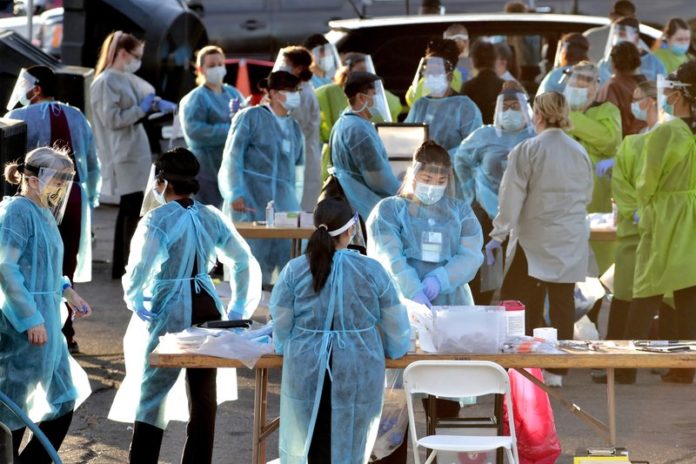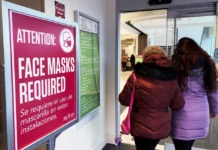
Coronavirus has hit the Apache tribe in Arizona especially hard. The White Mountain Apache tribe has had ten times the rate of infection compared to the rest of the state. But even with that high rate of infection, the death rate is lower, at just 1.3% compared to the rest of Arizona, which has a death rate of 2.1%.
According to a New York Times report, the main cause of this lower death rate is a direct result of contact tracing. As reported in a New England Journal of Medicine article, intensive contract tracing is helping to find and trace coronavirus victims, but it is also helping to find people who may have remained unidentified until symptoms had worsened.
The most crucial tool in this contact tracing: a simple, inexpensive medical device called an oximeter. When clipped to a finger, an oximeter can detect low blood oxygen levels in people who often didn’t even realize they were ill.
According to the CDC, contact tracing is simply letting people know when they may have been exposed to COVID-19. Because of possible exposure, a person should monitor their health for signs and symptoms of COVID-19. Along with identifying those people who may have been exposed, contact tracing experts offer coronavirus testing and recommend anyone exposed to self-isolate if they have COVID-19 or self-quarantine if they are a close contact.
Although the spread of the virus hasn’t slowed among the Apache tribe, the death rate is lower. Dr. Arnold Monto, a professor of epidemiology and public health at the University of Michigan, reviewed the findings and said, “This is really not about contact tracing cutting down spread. Do it right, and the mortality will be lower. This could help with other hard-to-reach communities,” he added. “If we identify cases sooner, they won’t come in half dead with horrible lungs.”
This is the approach the contact tracers took when looking to identify patients and their families with Covid-19. The Apache tribe uses a group of 30 contact tracers. These include doctors and community members who work together. As they went from family to family, house to house, they would find patients who were positive for coronavirus. But along with that, they would find family members who were also sick, but unaware. When the doctors started visiting the homes of infected people, they focused on testing their blood oxygen levels. They monitored oxygen levels of these patients closely, sending them to the hospital if their oxygen level got too low. While this was happening, contact tracers started noticing family members who did not look healthy. Often the signs were subtle, but the doctors were able to recognize changes in complexion or energy levels. Doctors would ask family members to take a walk and then check their oxygen levels. Usually, the person wouldn’t look sick, wouldn’t be gasping for breath, or look ill, but when their oxygen levels were checked, they were dangerously low.
“It’s a fairly common scenario,” said Dr. Dominick Maggio, director of the emergency department at Whiteriver Indian Hospital. “The team goes out looking for one person and finds someone else.”
Dr. Douglas White, professor of critical care medicine at the University of Pittsburgh, stated that aggressive contact tracing is finding people with mild symptoms who otherwise would not have been found, adding to the case count and decreasing the observed fatality rate.
This type of contact tracing is saving lives because it is helping to identify patients who would have gone unidentified until it was too late. Timely intervention increases the survival rate of those patients who are inadvertently identified through contact tracing.














